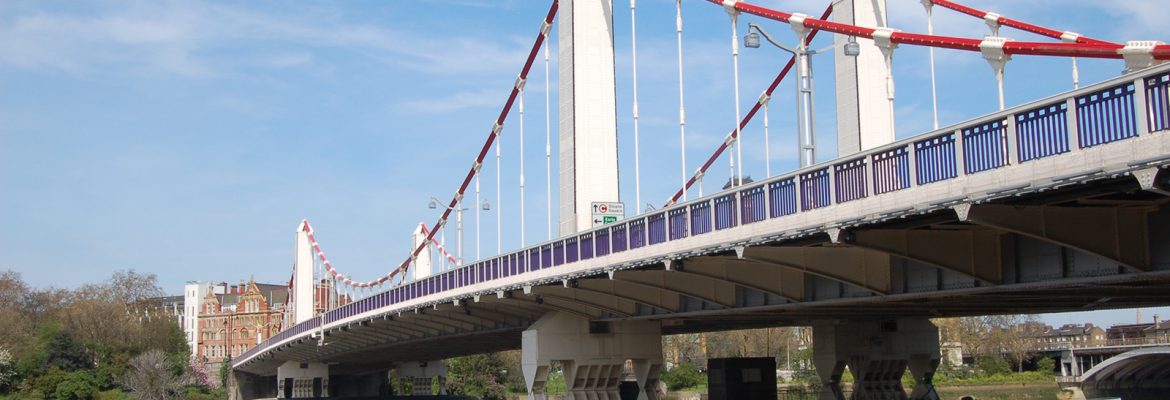Chelsea Bridge
Chelsea Bridge is a self-anchored suspension bridge for road and foot traffic running north-south over the River Thames in London, between Grosvenor Bridge and the Albert Bridge. There has been a bridge linking Battersea to Chelsea since 1851, but the present Grade II listed structure was built in 1937. By chance, the site selected for the bridge proved to be the same crossing point used by Julius Caesar in 54 BC.
History
During excavations for the first bridge between Chelsea and Battersea Park, which was being finished at the same time, workmen discovered an enormous number of Roman and Celtic relics, including skeletons and weapons. The most important relic was a stunning bronze shield dubbed ‘The Battersea Shield’. The shield was made from several pieces of bronze sheeting riveted together and decorated with 27 enamel studs. The Battersea Shield is on display in the Museum of London.
The first Chelsea Bridge was authorised by an Act of Parliament in 1846 and built between 1851-1858 to link the densely populated north bank of the river to the relatively green and unpolluted land south of the river and to the newly designed Battersea Park. The suspension bridge was designed by the architect Thomas Page and officially opened by Queen Victoria on 31 March 1858. It was named the Victoria Bridge in the Queen’s honour and made a beautiful matching pair with the Albert Bridge just upriver.
The First Bridge
The Victoria Bridge was opened to the public on 3 April 1858, but there was a problem. The new bridge had to be paid for, so a toll was charged. This, not surprisingly, caused a public protest. People complained that the government had opened a free public park in Battersea, but was charging them to get there. The finished bridge stretched 698 feet (213m) and was 64 feet wide (20.7m). The central span is 352 feet (107.3m), with side spans of 173 feet (52.7m). Remarkably, it came in under budget, at less than GBP 365,000.The design was by EJ Buckton and HJ Fereday of Rendel, Palmer & Tritton, London and the construction was done by Holloway Brothers. The designers claimed that the new Chelsea Bridge was the first self-anchoring suspension bridge in the UK. The bridge is suspended on steel cables of 37 strands bundled into a hexagon shape. The towers are made of steel set on rocker bearings.
Chelsea Bridge Today
Chelsea Bridge is sparsely decorated compared to the Albert Bridge a few hundred yards away. There are five sets of lampposts decorated with gilded galleons. At each end of the bridge are tail turrets decorated with heraldic shields and more golden galleons. On the outside face is the London County Council crest of St George’s Cross, a lion, and wavy lines representing the River Thames. On the inner face of the two southern turrets is a dove of peace, representing Battersea. The north-west turret bears the crest of Chelsea; a winged bull, a lion, a boar, and a stag. The bridge marks the boundary between Chelsea and Westminster so the north-east turret has the Westminster crest of a Tudor rose over a portcullis.
London Multi-Entry Multi-Directional VVIP Visitors Guide © Simon Newbound


